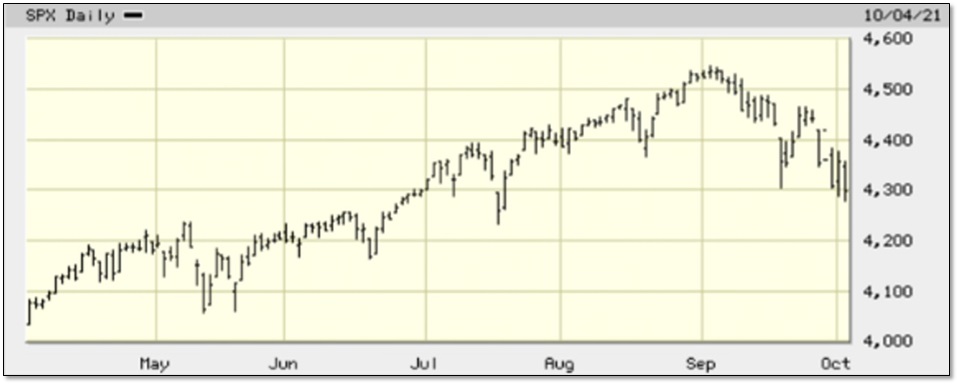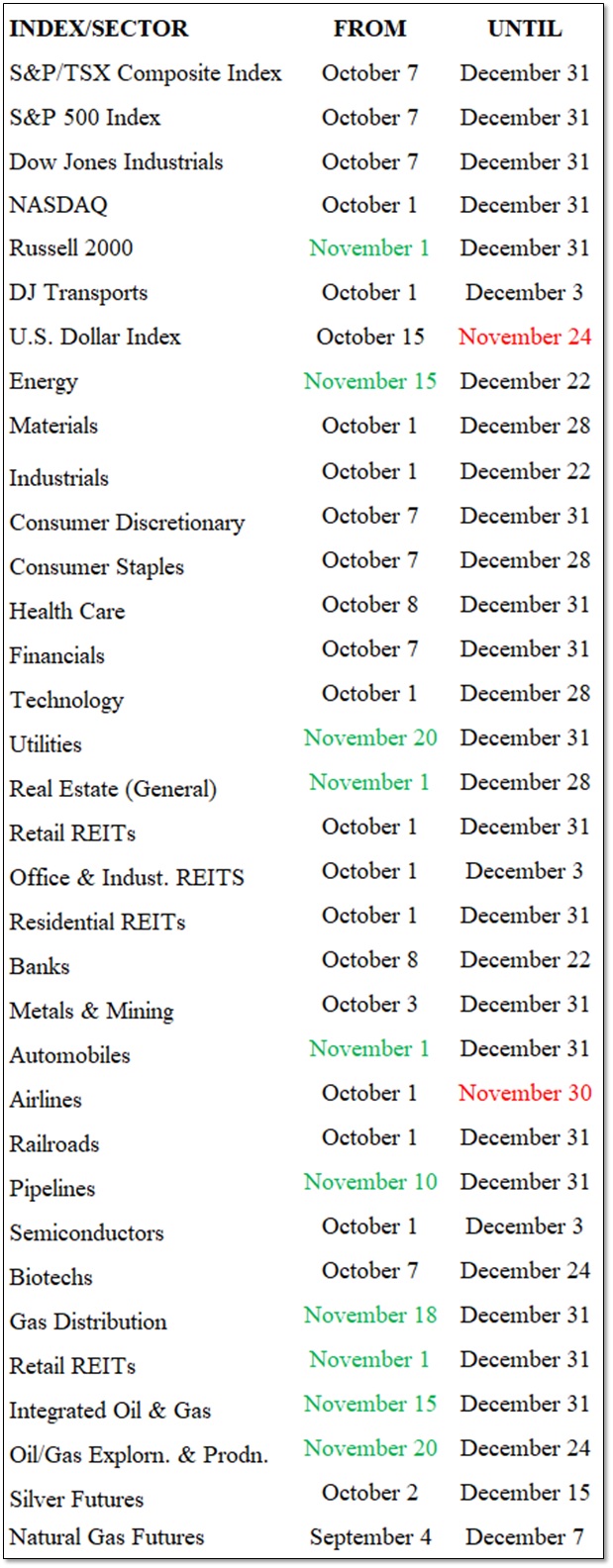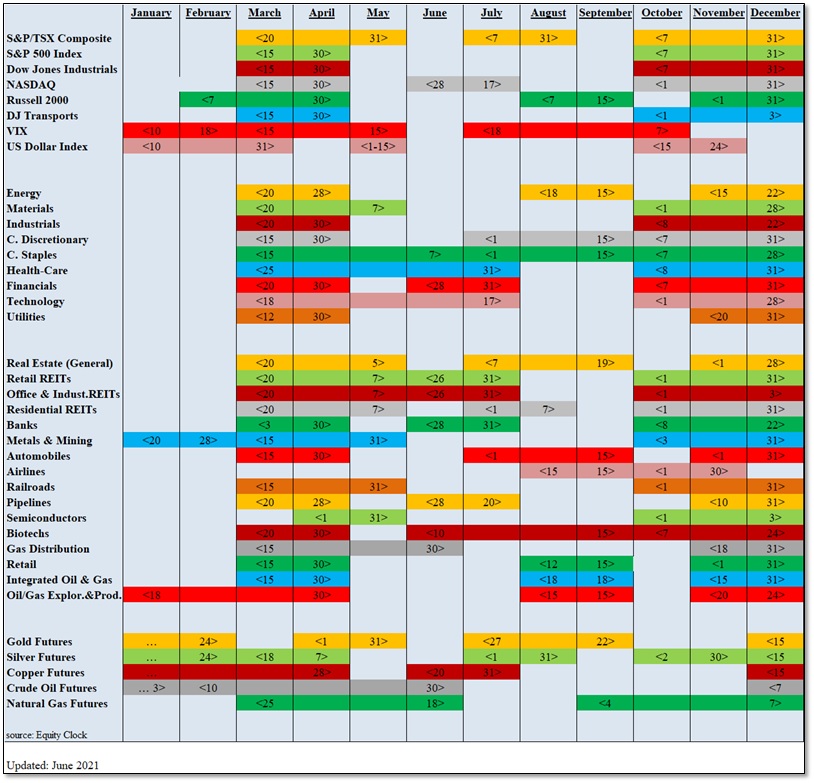eResearch | For some time, we have cautioned that the market was due for a pull-back. Last month, we thought it was finally happening. The charts below show otherwise. Chart 1 is the S&P 500 Index until the end of September. Chart 2 is until the end of October.
Figure 1: Six-Month S&P 500 Index To September 30

Figure 2: Six-Month S&P 500 Index To October 29

Comment: With a meaningful rebound that occurred just before the middle of the month of October, it looks like the Strong Seasonality Period got off to an early start. The S&P 500 Index has catapulted to, yet again, new all-time highs. The other major indexes show a similar trend. The market continually seems to be shrugging off any negative news. That worries us. Still, “the trend is your friend”, so we have to hang in there, although some profit-taking is never a bad decision. But we also have to be ready to jump. A catalyst … the catalyst … never announces itself in advance. You don’t realize it has happened until some time later. So, be alert1
Changes for November
There are TEN market indexes/sectors that exhibit new seasonal strength in November. These include: Russell 2000; Energy; Utilities; Real Estate (General); Automobiles; Pipelines; Gas Distribution; Retail; Integrated Oil & Gas; and Oil & Gas Exploration & Production. See the chart below.
The TWO indexes/sectors that leave their period of seasonality strength behind this month are: the U.S. Dollar Index and the Airlines.
There was just ONE index/sector that left during the month of October: the VIX..
Seasonal Trends for the Market Segments in November
The following table shows which indexes/sectors gain or lose seasonal strength during the month of November. There are 10 additions this month, shown in GREEN under FROM, and there are 2 expiries this month, shown in RED under UNTIL.
NOTE: A full seasonality list of indexes and sectors is provided at the end of this report.
Figure 3: Current Seasonal Positive Strength for the Market Segments

Importance Of Seasonality Trends
Seasonality refers to particular time-frames when stocks/sectors/indexes are subjected to and influenced by recurring tendencies that produce patterns that are apparent in the investment valuation process. A seasonality study preferably uses at least 10 years of data.
Seasonality Trends Chart
The Seasonality Trends chart below was updated in June 2021. The chart shows the periods of seasonal strength for 38 (formerly 28) market segments (sectors/indexes). Each bar indicates a buy and a sell date based upon the optimal holding period for each market sector/index.
The ten new industry sectors are (1) Retail REITs, (2) Office & Industrial REITs, (3) Residential REITs, (4) Pipelines, (5) Semiconductors, (6) Integrated Oil & Gas, (7) Crude Oil Futures, (8) Automobiles, (9) Airlines, and (10) Railroads.
The Seasonality trends chart is an ever-changing 14-year average of the indexes and sub-indexes that we track. The information in the chart is courtesy of www.equityclock.com.
Figure 4: Seasonality Trends Chart

Notes: All numbers in CAD unless otherwise stated. The author of this report, and employees, consultants, and families of eResearch personnel may own stock positions in companies mentioned in this article and may have been paid by a company mentioned in the article or research report. eResearch offers no representations or warranties that any of the information contained in this article is accurate or complete. Articles on eresearch.com are provided for general informational purposes only and do not constitute financial, investment, tax, legal, or accounting advice nor does it constitute an offer or solicitation to buy or sell any securities referred to. Individual circumstances and current events are critical to sound investment planning; anyone wishing to act on this information should consult with a financial advisor. The article may contain “forward-looking statements” within the meaning of applicable securities legislation. Forward-looking statements are based on the opinions and assumptions of the Company’s management as of the date made. They are inherently susceptible to uncertainty and other factors that could cause actual events/results to differ materially from these forward-looking statements. Additional risks and uncertainties, including those that the Company does not know about now or that it currently deems immaterial, may also adversely affect the Company’s business or any investment therein. Any projections given are principally intended for use as objectives and are not intended, and should not be taken, as assurances that the projected results will be obtained by the Company. The assumptions used may not prove to be accurate and a potential decline in the Company’s financial condition or results of operations may negatively impact the value of its securities. Please read eResearch’s full disclaimer.



